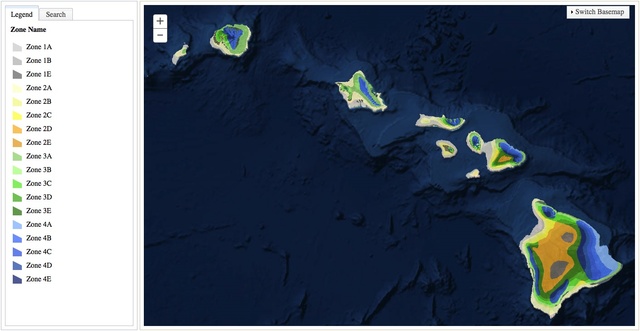There’s a new online tool to help Hawaii gardeners and small-scale farmers pinpoint the crop varieties most likely to succeed in their geographic areas. ADVERTISING There’s a new online tool to help Hawaii gardeners and small-scale farmers pinpoint the crop
There’s a new online tool to help Hawaii gardeners and small-scale farmers pinpoint the crop varieties most likely to succeed in their geographic areas.
The Kohala Center’s Hawaii Public Seed Initiative has launched the Seed Variety Selection Tool for the Hawaiian Islands at HawaiiSeedInitiative.org/svst.
“It’s a statewide map,” said Lyn Howe, a farmer and the seed initiative’s coordinator. “Working with Hawaii Public Seed Initiative, one of the biggest questions people had is, ‘What will grow in my location?’ Because we have so many micro-climates, not everything does well in each location. Like, say, tomatoes. Some varieties do better in different environments.
“People can input their address in the database, and it will tell them what zone they’re in. And they can go there and find out what different varieties will do well for them.”
Ilana Stout, a graduate student in tropical conservation biology and environmental science at the University of Hawaii at Hilo who describes herself as an “avid gardener,” developed the map and database as a final project in a geographic information systems class, with help from the school’s Geography Department and Spatial Data Visualization Labs.
“I think this is probably most useful for gardeners or for beginning farmers, because the established farmers have varieties they’ve worked with before and have some idea of what works for them,” Stout said.
Stout combined elevation data — a proxy for temperature — and moisture-zone data, which is based on rainfall and vegetation, that was compiled by Dr. Jonathan Price, an assistant professor of geography at UH-Hilo. Using the two sets of data, she identified 18 different climate zones for Hawaii Island. With a grant administered by the seed initiative, Stout expanded the map to include all major Hawaiian Islands, and designed a search function allowing users to enter their addresses to learn their specific climate zones.
“We have really diverse micro-climates on this island,” Stout said. “… There are big changes in temperature and rainfall in relatively short distances here on the island. Somebody who’s growing in Puna … may have very different success than somebody who’s growing in Waimea, or Kawaihae or Volcano.”
The seed initiative surveyed experienced gardeners statewide to find what plant varieties work best in their locations. They started with seven common food crops: lettuce, tomatoes, peppers, eggplant, beans, squash/pumpkins and taro.
“We started with those seven varieties to begin with because they’re the most common, and we’re hoping over time to expand that number, and to expand the database as people see that it’s there,” Howe said.
Gardeners and small-scale farmers statewide with at least two years of successful experience growing specific varieties are encouraged to submit their crop performance data at HawaiiSeedInitiative.org/svst/seed-input. Names, physical addresses and contact information of contributors are kept confidential and not published on the website.
Stout said the best thing about the website is novice gardeners and small farmers can benefit from the experience of others growing in the same geographic area.
“A lot of times when people are trying new crops here in Hawaii, what they’ll basically have to do is a variety trial, where you order … maybe 10 different seed packets and try all those different kinds of beans to see which is the one that really works for you,” she said. “This gives you a kind of a jump on that because other people have already done that. So it gives you a little bit of a heads up on what you’re likely to have success with.”
Some geographic locations may have little or no submitted data or results for the area may not be available yet due to the database’s recent launch, Howe said.
“This is just the beginning,” she said. “We hope to expand it as we go along. It was quite a challenge to put in those few and find people willing to enter the database with their information. But we hope to expand it quite a bit more, even with seed saving.
“In the future, we’re going to be running some seed variety trials through the Hawaii Public Seed Initiative. So then, we can input what seeds will do well in various locations.”
Feedback on the database itself is also being sought, at seedproject@kohalacenter.org.
“This is a first version, so comments on ways to be improved are welcome,” Stout said.
Email John Burnett at jburnett@hawaii
tribune-herald.com.



